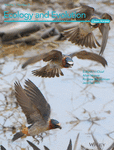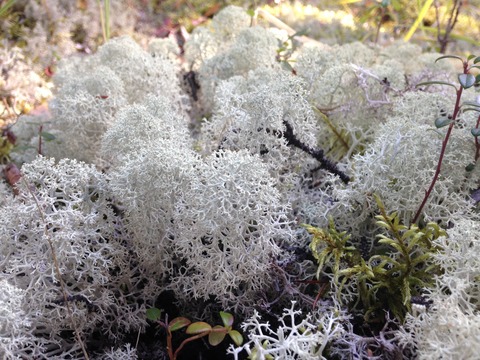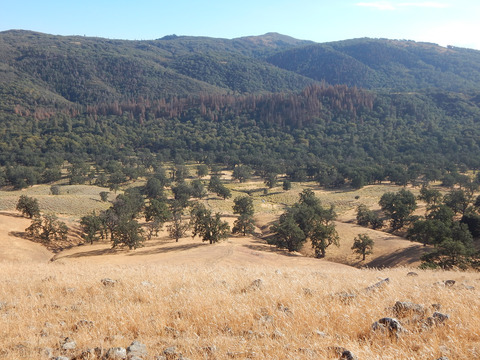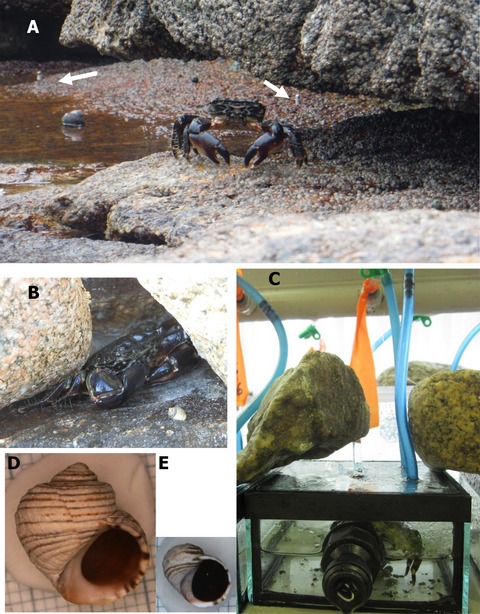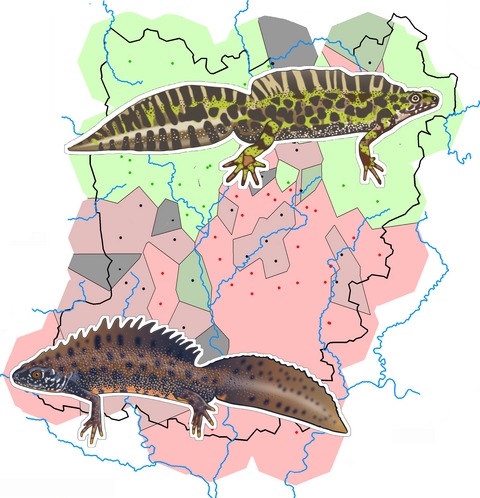Journal list menu
Export Citations
Download PDFs
Issue Information
ORIGINAL RESEARCH
Geographic structure in the Southern Ocean circumpolar brittle star Ophionotus victoriae (Ophiuridae) revealed from mtDNA and single-nucleotide polymorphism data
- Pages: 475-485
- First Published: 16 December 2016
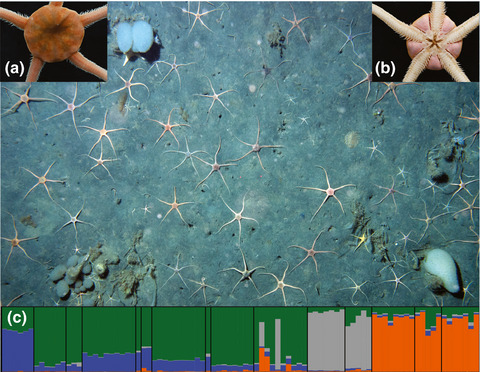
Phylogeography of Southern Ocean circumpolar brittle star Ophionotus victoriae was investigated from the Ross Sea through the eastern Weddell Sea, a distance of >7,000 km. Use of mtDNA and nuclear single-nucleotide polymorphism data both revealed geographic structure through this range. In particular, the western Antarctic Peninsula and Weddell Sea are an area of high genetic diversification, while the Bellingshausen Sea appears genetically unique or possibly isolated.
Estimating plant abundance using inflated beta distributions: Applied learnings from a lichen–caribou ecosystem
- Pages: 486-493
- First Published: 20 December 2016
Gauging megadiversity with optimized and standardized sampling protocols: A case for tropical forest spiders
- Pages: 494-506
- First Published: 20 December 2016
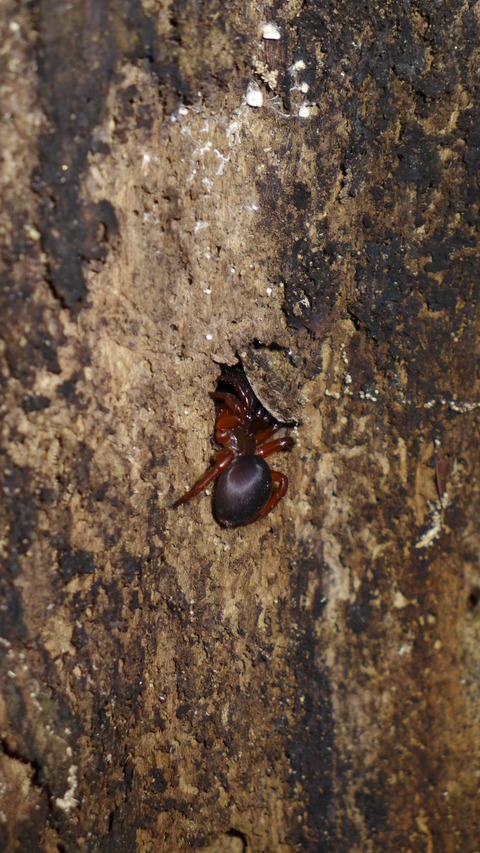
We develop and evaluate the first optimized and standardized protocol—COBRA-TF (Conservation Oriented Biodiversity Rapid Assessment for Tropical Forests)—for collecting data on megadiverse tropical forest communities using spiders as a model taxon. After designing COBRA-TF using a large dataset of semiquantitative field data collected in different continents, we prove that it is as efficient as commonly used site-specific protocols. Optimized and standardized sampling protocols provide excellent quality data, are easy to develop and apply, are applicable to any taxon or system, and promote comparability across datasets or sites.
Remating responses are consistent with male postcopulatory manipulation but not reinforcement in D. pseudoobscura
- Pages: 507-515
- First Published: 20 December 2016
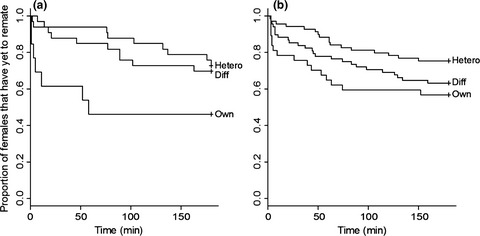
We evaluated evidence for reinforcing selection on female remating behaviors in D. pseudoobscura, by comparing females from populations historically allopatric and sympatric with D. persimilis. We found that the propensity to remate was not higher in sympatric females, as would be expected under reinforcement. Instead, females are generally less likely to remate after initial matings with unfamiliar males, regardless of species identity, consistent with females being poorly defended against postcopulatory manipulation by males with whom they have not coevolved.
Comparative mitochondrial and chloroplast genomics of a genetically distinct form of Sargassum contributing to recent “Golden Tides” in the Western Atlantic
- Pages: 516-525
- First Published: 20 December 2016

Our article presents the first mitochondrial genome sequencing and phylogenetic placement of the holopelagic forms of the macroalgal species Sargassum natans and Sargassum fluitans—the namesakes of the Sargasso Sea—establishing true genetic variation in what was once considered a species complex. We also present extensive partial chloroplast genomic data of all representative holopelagic Sargassum species, S. fluitans III, and S. natans I alongside the putatively rare S. natans VIII to reveal further genetic differences between the different forms. Finally, we provide primers that can differentiate between the known Sargassum forms that we tested with over 150 specimens—further enhancing the genetic resources available for this important and understudied group of pelagic Sargassum.
Variation in foraging success among predators and its implications for population dynamics
- Pages: 526-532
- First Published: 20 December 2016
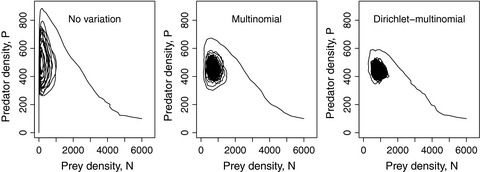
Predator–prey dynamics are strongly influenced by details in which predators consume prey. Common models use the average predation rate by ignoring variation among predator individuals. As variation in the foraging success among predators increases (e.g., from no variation to dirichlet-multinomial variation), dynamics become increasingly more stable even when the average foraging success does not change.
The large X-effect on secondary sexual characters and the genetics of variation in sex comb tooth number in Drosophila subobscura
- Pages: 533-540
- First Published: 20 December 2016
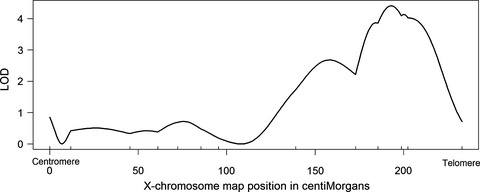
We have mapped the genetic basis of variation in a sexually dimorphic trait in Drosophila subobscura: the male sex combs. In doing so, we have identified a potential bias in estimating the X-chromosome contribution to this trait relative to whether we had performed reciprocal F1 crosses alone, which many studies have performed. We also fail to find evidence that variation in this trait is sexually selected despite its being dimorphic.
Intensified wind pollination mediated by pollen dimorphism after range expansion in an ambophilous biennial Aconitum gymnandrum
- Pages: 541-549
- First Published: 20 December 2016
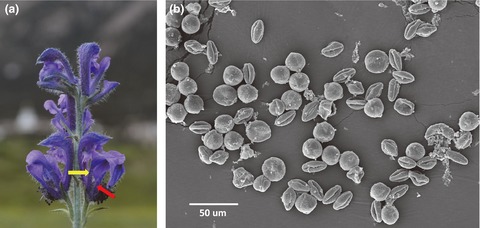
Our results suggested that wind pollination was enhanced by pollen dimorphism in the marginal population of Aconitum gymnandrum, and wind pollination may provide reproductive assurance when bumblebee activity is unpredictable during range expansion, indicating that ambophily is stable in this species.
Convergent evolution in social swallows (Aves: Hirundinidae)
- Pages: 550-560
- First Published: 20 December 2016

Using a bird family with diversity in social behavior, the swallows and martins (Hirundinidae), we examine how switches between social and nonsocial behavior influence morphological evolution. We find strong convergence in social swallow species to small body morphology, while solitary swallow species exhibit highly variable morphology. These results illustrate the importance of social behavior on morphological evolution. Photograph by Joel G. Jorgensen.
Vertebrate defense against parasites: Interactions between avoidance, resistance, and tolerance
- Pages: 561-571
- First Published: 20 December 2016
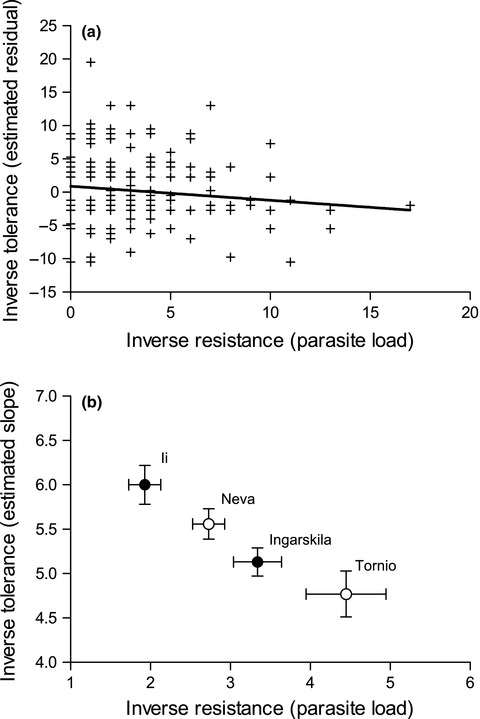
Hosts can utilize different types of defense against the effects of parasitism, including avoidance, resistance, and tolerance. Here, we assessed these three defence traits under common garden conditions in a natural host–parasite system, including host individuals from two species and four genetically distinct populations. We found significant differences between the host species and populations in parasite defence and demonstrate rare evidence for a trade-off between resistance and tolerance.
Morphological divergence of lake and stream Phoxinus of Northern Italy and the Danube basin based on geometric morphometric analysis
- Pages: 572-584
- First Published: 20 December 2016
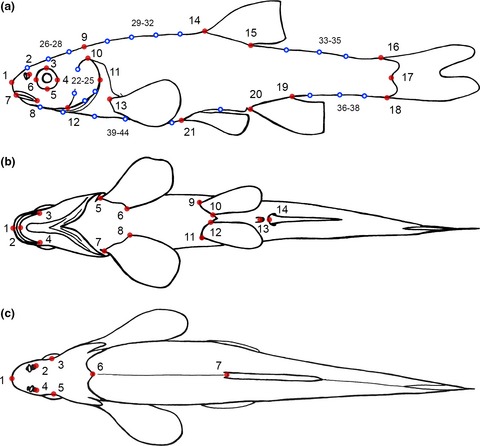
We have examined morphological divergence between Phoxinus populations inhabiting different habitats (lakes, streams), as well as from different genetic groups (Northern Italy, Danube basin). By comparing morphological differences between groups (habitats, genetics), we seek to disentangle environmental effects on body shape from genetic ones, which shall also serve as a basis for future taxonomy studies.
The development of an intermediate-duration tag to characterize the diving behavior of large whales
- Pages: 585-595
- First Published: 20 December 2016
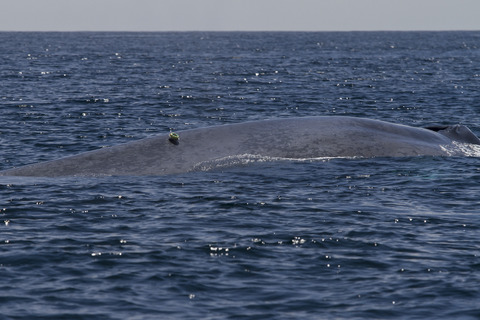
We present a multiweek data logger developed to record large whale behavior at high resolution (1-Hz) while collecting GPS-quality locations. The tag has been deployed on blue, fin, and sperm whales, and it has recorded diving and feeding behaviors during dives down to 1,600 m deep. Capable of staying attached to an animal for periods of up to 7 weeks, this tag fills a critical technology gap and represents a dramatic improvement in our ability to study the behavior of large whales and the ecological mechanisms that drive it.
Hopes and challenges for giant panda conservation under climate change in the Qinling Mountains of China
- Pages: 596-605
- First Published: 20 December 2016
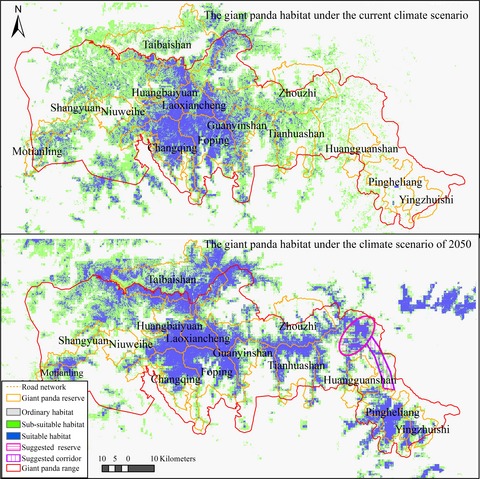
We for the first time quantified the spatial dynamics of giant panda habitat with climate change and identified an eastward 11-km climate change-induced habitat shift in the Qinling Mountains by 2050. We found the challenge for the persistence of giant panda under the climate change and a new climate-suitable habitat for giant panda to survive in the future.
Contrasting behavior between two populations of an ice-obligate predator in East Antarctica
- Pages: 606-618
- First Published: 20 December 2016
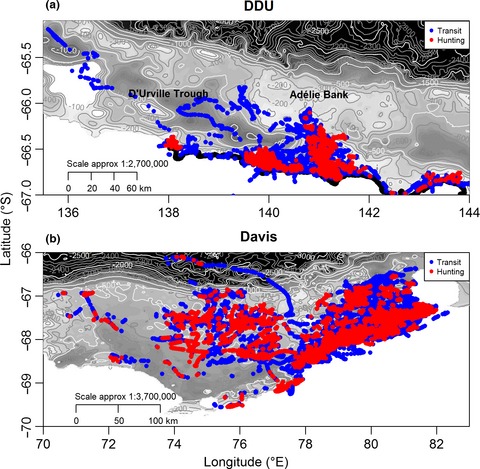
Our study highlights some of the key foraging strategies adopted by Weddell seals from two remote locations with contrasting physical attributes during the Antarctic winter. We show that Weddell seals adapt their foraging behavior in response to physical parameters of their environment that are likely to be associated with better prey availability and accessibility as well as reliable access to breathing sites. At finer scales, the foraging behavior of Weddell seals appears to respond to the distribution and availability of prey in the water column.
Effects of temperature on transcriptome and cuticular hydrocarbon expression in ecologically differentiated populations of desert Drosophila
- Pages: 619-637
- First Published: 20 December 2016
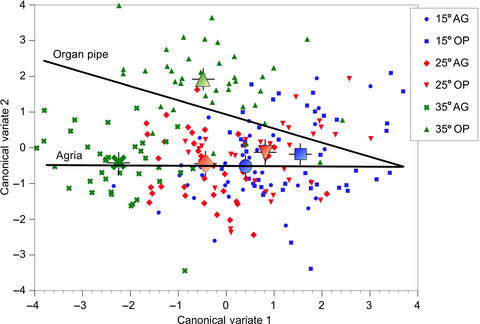
Transcriptome expression and cuticular hydrocarbon (CHC) variation of geographically isolated populations of Drosophila mojavensis were assessed at contrasting temperatures in efforts to understand genomic responses and CHC plasticity to climate change. Thousands of differentially expressed genes were observed caused by temperature differences, population origin, as well as rearing substrates, and CHCs were dramatically influenced by short-term exposure to thermal shifts. Predicting short-term responses to increasing temperatures in desert-adapted organisms will require knowledge of within species population differences as well as local ecology.
Geographical structure, narrow species ranges, and Cenozoic diversification in a pantropical clade of epiphyllous leafy liverworts
- Pages: 638-653
- First Published: 20 December 2016
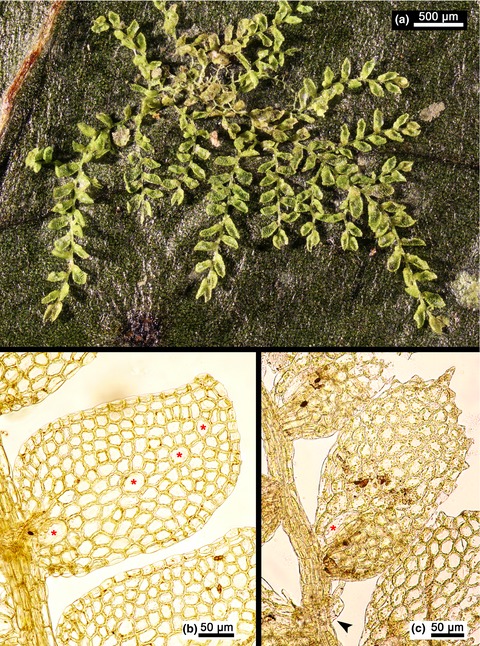
Widespread polyphyly of supposedly pantropical species indicates an important role of morphologically cryptic or near-cryptic speciation in the evolutionary history of the epiphyllous liverwort genus Leptolejeunea. The clear geographic structure of the Leptolejeunea crown group contradicts the hypothesis of global panmixis and points to evolutionary processes including rare long-distance dispersal and subsequent speciation. Leptolejeunea may have benefitted from the large-scale distribution of humid tropical angiosperm forests in the Eocene.
Effects of biotic interactions on modeled species' distribution can be masked by environmental gradients
- Pages: 654-664
- First Published: 20 December 2016
Latitudinal variation in sexual dimorphism in life-history traits of a freshwater fish
- Pages: 665-673
- First Published: 20 December 2016
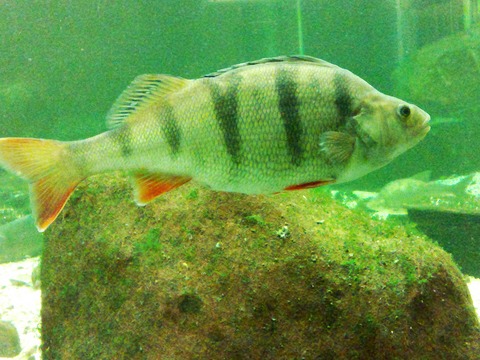
Our study highlights the importance of sex-specific response differences to environmental variables in regulating patterns of allometry between the sexes using a common and widely distributed fish European perch. We demonstrate latitudinal population-level variation in the magnitude of sexual size dimorphism (SSD) based on growth rate, and that environmental factors limiting overall growth decrease the magnitude of SSD. Hence, we challenge two predominant ecological rules (Rensch's and Bergmann's rules) that describe common large-scale patterns of body size variation.
Size selection by a gape-limited predator of a marine snail: Insights into magic traits for speciation
- Pages: 674-688
- First Published: 20 December 2016
Stabilization of a salamander moving hybrid zone
- Pages: 689-696
- First Published: 21 December 2016
Genetic by environmental variation but no local adaptation in oysters (Crassostrea virginica)
- Pages: 697-709
- First Published: 22 December 2016
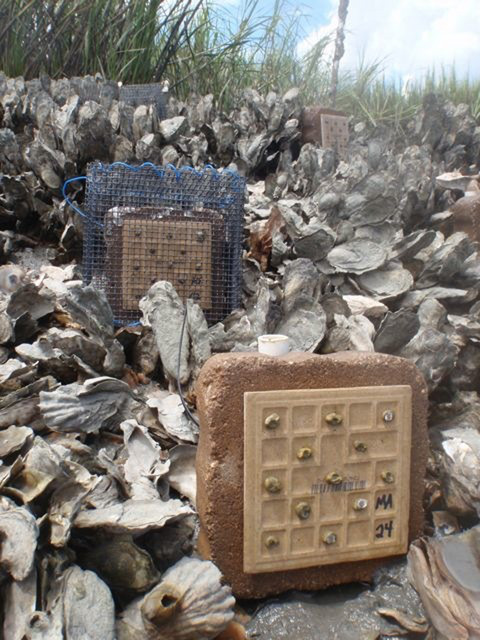
Despite increasing attention to the potential for local adaptation in the sea, few studies have tested multiple populations and environments, limiting our understanding of spatial consistency in patterns of adaptive genetic variation. We conducted a reciprocal transplant experiment of juvenile oysters from six populations across three field sites, finding little evidence for local adaptation in the presence or absence of predation. Our results suggest it will be challenging to identify the best populations for aquaculture or restoration efforts without prior performance information.
Repeatability and correlation of physiological traits: Do ectotherms have a “thermal type”?
- Pages: 710-719
- First Published: 22 December 2016
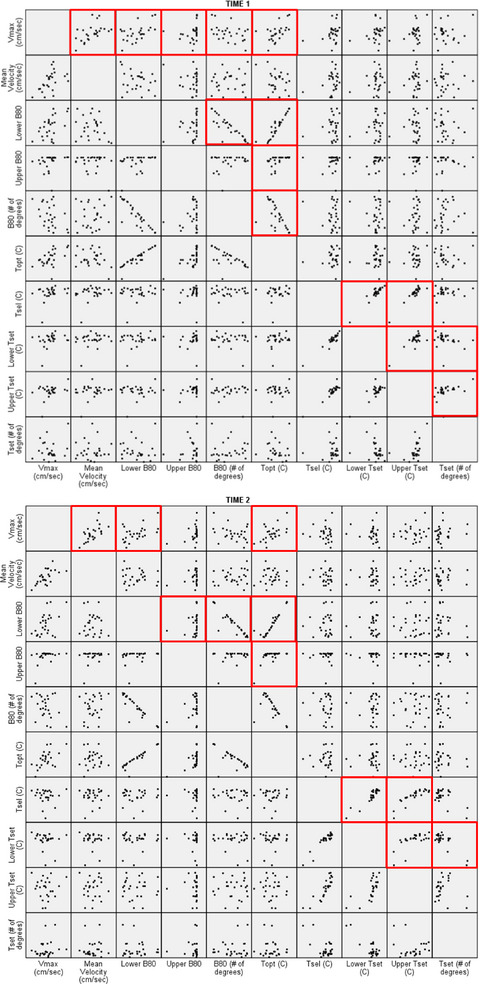
Current research focuses primarily on syndromes relating to aspects of behavior and life history but is less clear whether physiological traits also form a syndrome. In measuring the repeatability and correlation of ten thermal traits using a common invasive lizard, we found the presence of a thermal behavior syndrome. As predicted, individual lizards exhibited a ‘thermal type’ where hot types had faster sprint speeds and higher optimal and preferred body temperatures, whereas the opposite was true for cold types.
An approach to incorporate individual personality in modeling fish dispersal across in-stream barriers
- Pages: 720-732
- First Published: 23 December 2016
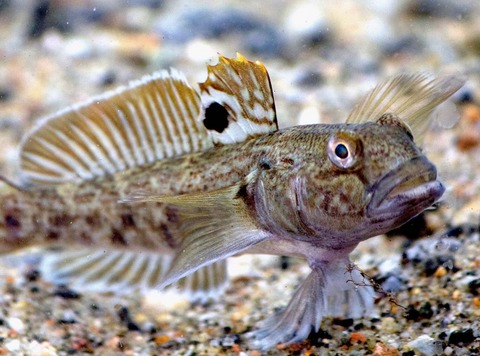
Understanding the dispersal of animals across dispersal barriers is important for understanding population dynamics and for conservation efforts. Animal personality can influence individuals’ propensity to overcome dispersal barriers. This study incorporates measures of animal personality into a model assessing the dispersal of an invasive fish across a dispersal barrier. The results demonstrate how existing concepts of assessing dispersal can be advanced by appreciating personality as a factor that influences dispersal across barriers.
REVIEW
Offshore aquaculture: Spatial planning principles for sustainable development
- Pages: 733-743
- First Published: 24 December 2016

As marine aquaculture expands into new offshore environments, diverse ecological considerations across a spectrum of spatial scales will be necessary to ensure sustainable outcomes. Using an ecological lens, we synthesize a broad multidisciplinary literature and provide recommendations for incorporating spatially explicit ecological and socioeconomic interactions into spatial planning for offshore aquaculture development.
ORIGINAL RESEARCH
Cryptic female Strawberry poison frogs experience elevated predation risk when associating with an aposematic partner
- Pages: 744-750
- First Published: 24 December 2016
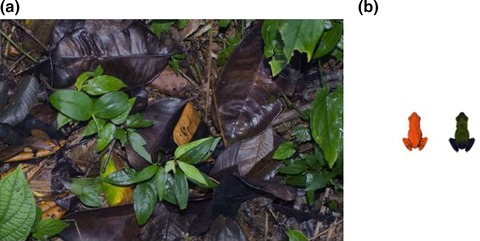
This experiment shows that cryptic females choosing an aposematic partner expose themselves to an elevated risk of predation. Thus, natural selection through predation may favor the evolution of morph assortative mating in Strawberry poison frogs depending on the antipredator strategy used. Aposematic females (and males) are released from the bound of predation.
Can spatial sorting associated with spawning migration explain evolution of body size and vertebral number in Anguilla eels?
- Pages: 751-761
- First Published: 25 December 2016
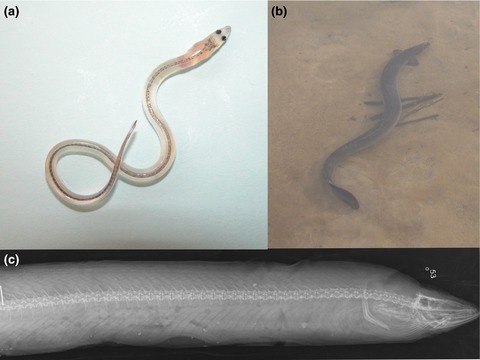
We present rare evidence that macroevolutionary diversification in body size of freshwater eels has been driven by spatial sorting associated with spawning migration. Our demonstration of correlated shifts in body size and migration distance illustrates that instead of increasing homogeneity, dispersal can be a structuring force promoting evolutionary change. Our study expands the ecological settings and hierarchical levels of biological organization for which the spatial sorting hypothesis seems to have predictive power.
Study design and parameter estimability for spatial and temporal ecological models
- Pages: 762-770
- First Published: 30 December 2016
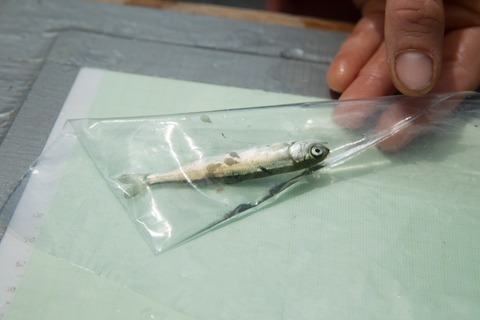
Ecological systems are complex and so are some of the models that describe them. Parameters in these models may not be estimable given available data, but few ecologists check parameter estimability. We use a case study to illustrate how data cloning, a new statistical tool, can be used in simulation studies to check parameter estimability and guide study design.
Plant invasion and speciation along elevational gradients on the oceanic island La Palma, Canary Islands
- Pages: 771-779
- First Published: 27 December 2016
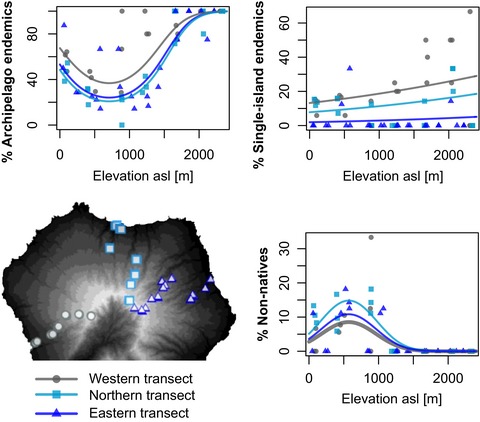
Ecological, anthropogenic, and spatial filters control plant richness, diversification, and establishment of non-native species on the oceanic island La Palma. Increase in ecological isolation with elevation likely drives diversification and thus above average numbers of endemics at high elevations. We argue that unsuitable environmental conditions and lower human influences are responsible for the absence of non-native species at elevations above 1200 m.
Host specificity of two pollinating seed-consuming fly species is not related to soil moisture of host plant in the high Himalayas
- Pages: 780-789
- First Published: 30 December 2016

In the high Himalayas, Rheum nobile and R. alexandrae differ in their distribution in terms of soil moisture, that is R. nobile typically occurs in scree with well-drained soils, R. alexandrae in wetlands, and they are pollinated by their respective mutualistic seed-consuming flies, Bradysia sp1. and Bradysia sp2. We investigated whether soil moisture is important for regulating host specificity. Our results indicate that soil moisture is unlikely to play a determining role in regulating host specificity of the two fly species. However, their pupation and adult emergence in response to extremely wet or dry soils are habitat-specific.




